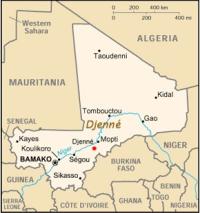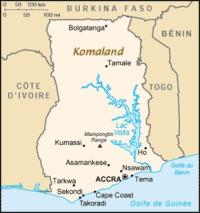Copy Link
Add to Bookmark
Report
dictyNews Volume 24 Number 03

Dicty News
Electronic Edition
Volume 24, number 3
February 18, 2005
Please submit abstracts of your papers as soon as they have been
accepted for publication by sending them to dicty@northwestern.edu
or by using the form at
http://dictybase.org/db/cgi-bin/dictyBase/abstract_submit.
Back issues of Dicty-News, the Dicty Reference database and other
useful information is available at dictyBase - http://dictybase.org.
=============
Abstracts
=============
Loss of the Dictyostelium RasC protein alters vegetative cell size,
motility and endocytosis.
Chinten James Lim , Karl A. Zawadzkià, Meenal Khosla, David M. Secko,
George B. Spiegelman and Gerald Weeks.
Department of Microbiology and Immunology,
University of British Columbia, Vancouver, British Columbia, V6T1Z3 Canada.
Exp. Cell Res., in press
In addition to its previously established roles in cAMP relay and cAMP
chemotaxis, loss of signal transduction through the RasC protein was found
to impact a number of vegetative cell functions. Vegetative rasC- cells
exhibited reduced random motility, were less polarized and had aberrant
F-actin distribution. Cells lacking RasC also contained more protein and
were larger in size than wildtype cells. These increases were associated
with increased liquid phase endocytosis. Despite the increase in cell size,
cytokinesis was relatively normal and there was no change in the rate of
cell division. rasC- cells also chemotaxed poorly to folate and exhibited
reduced F-actin accumulation, reduced ERK2 phosphorylation and reduced
Akt/PKB phosphorylation in response to folate, indicating that RasC was
also involved in transducing chemotactic signals in vegetative cells.
Submitted by: Gerry Weeks [gerwee@interchange.ubc.ca]
-----------------------------------------------------------------------------
Epistasis analysis with global transcriptional phenotypes
Nancy Van Driessche, Janez Demsar, Ezgi O. Booth, Paul Hill, Peter Juvan,
Blaz Zupan, Adam Kuspa and Gad Shaulsky
Baylor College of Medicine, Houston, TX, USA and University of Ljubljana,
Ljubljana, Slovenia.
Nature Genetics, in press
Classical epistasis analysis can determine the order of function of genes in
pathways using morphological, biochemical and other such phenotypes. It
requires knowledge of the pathwayâs phenotypic output and a variety of
experimental expertise, so it is unsuitable for genome-scale analysis. Here
we show the utility of microarray profiles of mutants as phenotypes for
epistasis analysis. Considering genes that regulate Dictyostelium protein
kinase A activity, we determine known and unknown epistatic relationships and
reconstruct a genetic network with microarray phenotypes alone. This work
demonstrates that microarray data can provide a uniform, quantitative tool
for large-scale genetic network analysis.
Submitted by: Gad Shaulsky [gadi@bcm.tmc.edu]
-----------------------------------------------------------------------------
A comparative sequence analysis reveals a common GBD/FH3-FH1-FH2-DAD
architecture in formins from Dictyostelium, fungi and metazoa.
Francisco Rivero(1), Tetsuya Muramoto(3), Ann-Kathrin Meyer(1), Hideko
Urushihara(3), Taro Q. P. Uyeda(2), Chikako Kitayama(2)
1. Center for Biochemistry and Center for Molecular Medicine, Medical Faculty,
University of Cologne. Joseph-Stelzmann-Strasse 52, 50931 Kln, Germany
2. Gene Function Research Center, Tsukuba Central #4
National Institute of Advanced Industrial Science and Technology (AIST)
Higashi 1-1-1 Tsukuba-shi, Ibaraki 305-8562, Japan
3. Institute of Biological Science, University of Tsukuba, Tsukuba-shi,
Ibaraki 305-8572, Japan
BMC Genomics, in press
Background
Formins are multidomain proteins defined by a conserved FH2 (formin homology 2)
domain with actin nucleation activity preceded by a proline-rich FH1 domain.
Formins act as profilin-modulated processive actin nucleators conserved
throughout a wide range of eukaryotes.
Results
We present a detailed sequence analysis of the 10 formins (ForA to J)
identified in the genome of the social amoeba Dictyostelium discoideum. With
the exception of ForI and ForC all other formins conform to the domain
structure GBD/FH3-FH1-FH2-DAD, where DAD is the Diaphanous autoinhibition
domain and GBD/FH3 is the Rho GTPase-binding domain/formin homology 3 domain
that we propose to represent a single domain. ForC lacks an FH1 domain, ForI
lacks recognizable GBD/FH3 and DAD domains and ForA, E and J have additional
unique domains. To establish the relationship between formins of Dictyostelium
and other organisms we constructed a phylogenetic tree based on the alignment
of FH2 domains. Real-time PCR was used to study the expression pattern of
formin genes. Expression of forC, D, I and J increased during transition to
multi-cellular stages, while the rest of genes displayed less marked
developmental variations. During sexual development, expression of forH and
forI displayed a significant increase in fusion competent cells.
Conclusions
Our analysis allows some preliminary insight into the functionality of
Dictyostelium formins: all isoforms might display actin nucleation activity
and, with the exception of ForI, might also be susceptible to autoinhibition
and to regulation by Rho GTPases. The architecture GBD/FH3-FH1-FH2-DAD
appears common to almost all Dictyostelium, fungal and metazoan formins,
for which we propose the denomination of conventional formins, and implies a
common regulatory mechanism.
Submitted by: Francisco Rivero [francisco.rivero@uni-koeln.de]
==============================================================================
[End Dicty News, volume 24, number 3] 




















